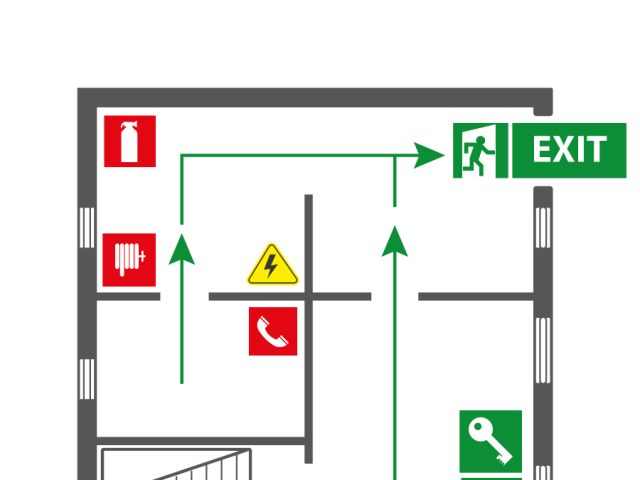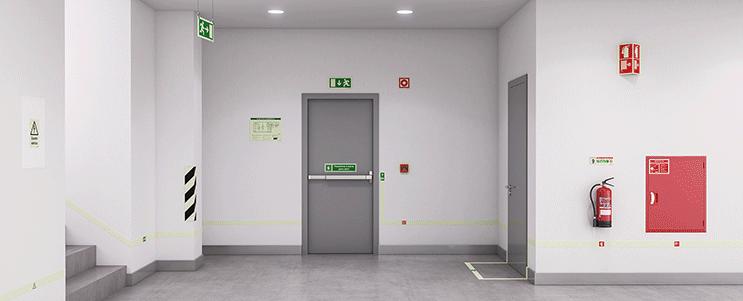
Evacuation Routes: An Essential Element in SCIE Systems
Share
Escape routes are essential to ensuring safety in any building. These routes ensure a quick and safe exit in emergency situations, such as fires, and are regulated by specific standards in Portugal, such as the Fire Safety Regulations in Buildings (SCIE) . In this article, we will explore the essential elements of escape routes and how to ensure they comply with all the rules for protection and safety.
What are Evacuation Routes?
Evacuation routes are defined routes within buildings that allow the orderly exit of occupants to a safe location. They include corridors, emergency exits, stairs and ramps, all of which are clearly signposted. Compliance with national regulations, such as Decree-Law No. 220/2008 , ensures that these routes are prepared to protect lives.
5 Key Elements of Safe Escape Routes
-
Correct Dimensions for Evacuation
Evacuation routes must be wide enough to accommodate the maximum number of people expected to be in the building. For example:- Residential buildings require smaller minimum widths than public or industrial buildings.
- RT-SCIE defines specific parameters for stairs, doors and corridors, ensuring the safe flow of occupants.
-
Clearly Visible Evacuation Signage
The signage of evacuation routes must:- Be strategically positioned.
- Be clear and bright, preferably photoluminescent, to function even in the event of a power failure.
- Indicate the location of emergency exits and fire extinguishers .
-
Always Clear Paths
Keeping pathways clear of obstacles is essential. Blocked corridors or locked exits put lives at risk and can lead to severe fines. -
Smoke and Heat Protection
Routes must be protected against fire and smoke. Fire barriers, fire-resistant doors and ventilation systems help ensure a safe environment during evacuation. -
Maintenance and Training
- Regular inspections ensure that escape routes are always in compliance.
- Emergency simulations help occupants be prepared for real-world situations.
Why Are Evacuation Routes Crucial?
Having well-planned evacuation routes saves lives. In addition, complying with SCIE regulations avoids legal penalties and increases occupant confidence in commercial, residential and public buildings.
Best Practices for Optimizing Evacuation Paths
- Check legal compliance : Make sure the building complies with all SCIE standards.
- Implement modern systems : Emergency lighting systems and digital signage can improve evacuation.
- Provide regular training : Educate occupants about available emergency routes and exits.
Conclusion: Evacuation Routes Will Save Lives
Ensuring that evacuation routes are well-designed, marked, and free of obstructions is more than a legal requirement—it’s a commitment to safety. Invest in the maintenance, upgrades, and education of ECS systems to protect lives and prevent unnecessary risks.
If you have questions about evacuation routes or want to know how to implement an effective plan, contact us! We are here to help.



